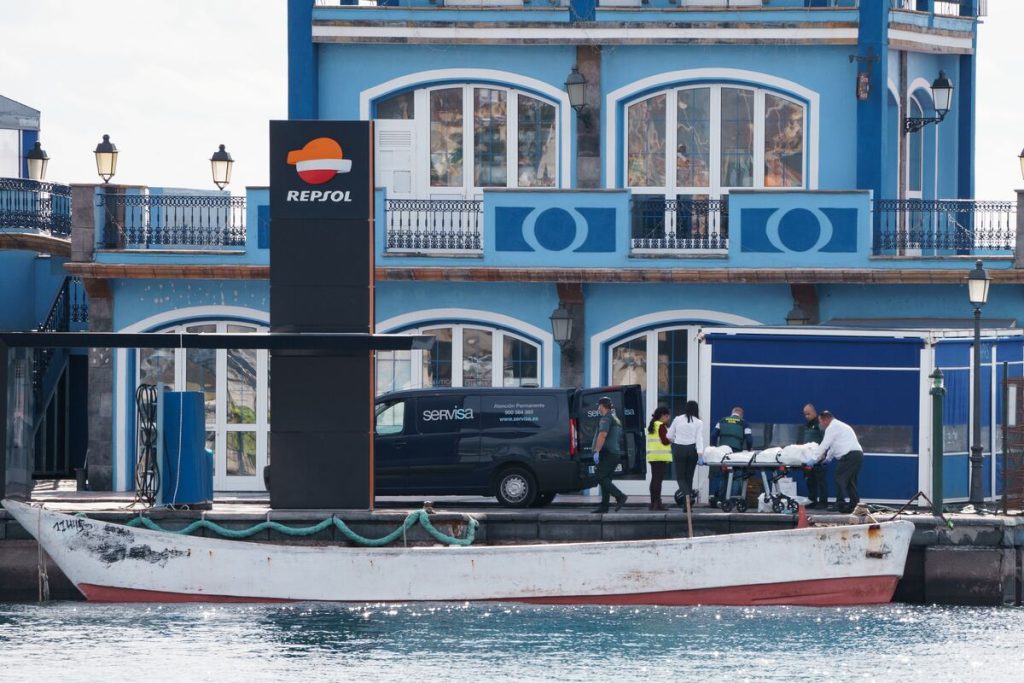The year 2025 began tragically on the Canary route, with a first cayuco reaching the islands with 58 people on board, along with two confirmed dead bodies, according to emergency services of the Government of the Canary Islands. The boat arrived under its own power on Wednesday at Las Galletas, in the municipality of Arona (southern Tenerife). Later, the Maritime Rescue activated the Salvamar Acrux and Adhara, which escorted two more cayucos to the port of La Restinga, in El Hierro. The first boat carried 70 people, including 11 women, while the second had 68 (12 women) on board, all of whom arrived apparently in good health. This was the first boat to arrive in the islands since December 30, following a busy weekend where 14 boats were rescued, carrying a total of 1,064 migrants. Between Christmas Day and December 30, around 2,190 people arrived in the Canary Islands on 34 boats. One person died during their transfer by helicopter to El Hierro airport.
By December 26, 45,328 people had arrived in the islands, marking an 18.3% increase compared to the same period in 2023, according to police data accessed by EL PAÍS. This surge made last year by mid-November the most active year in the history of the Canary route, surpassing the numbers from 2023 (39,910). It is expected that the Ministry of Interior will provide the definitive arrival figures on Thursday. Between 2023 and 2024, over 85,000 people have landed in the islands, more than in the previous 15 years combined. For the second consecutive year, El Hierro has been the island receiving the most arrivals, unlike the crisis in the early 2010s, which focused more on Gran Canaria and Lanzarote.
The reactivation of the Canary route in the final months of the year has also heightened political tension in the islands. On Monday, the President of the Canary Islands, Fernando Clavijo, criticized both the Government and the PP in an interview on SER, accusing them of being “complicit” in maintaining the alert situation in the Canaries. Clavijo pointed out that the Government doesn’t intervene despite having the necessary competence, while the PP obstructs progress. According to his data, the autonomous government now oversees 5,800 unaccompanied migrant minors. Following Clavijo’s remarks, the PP demanded a comprehensive change in the State’s migration policy to address the issue of migrants in the Canaries. The spokesperson of the Popular Parliamentary Group, Miguel Tellado, accused the Pedro Sánchez government of encouraging a “call effect” with a “do-gooder discourse” and criticized the lack of measures to combat illegal immigration. Andalusian President Juan Manuel Moreno (PP) moved away from this aggressive stance on Tuesday, noting in his Christmas speech that turning a blind eye to this “drama” is not an option and highlighting the need to address the issue.
In conclusion, the situation in the Canary Islands at the beginning of 2025 is marked by tragic events and a significant influx of arrivals through the Canary route. The growing number of migrants reaching the islands has raised concerns among the local authorities and intensified political tensions. The Canary Islands have become a critical point for migration in recent years, witnessing a surge in arrivals that has surpassed previous records. The disagreements and debates among political parties reflect the challenges in addressing the complex issue of migration and the need for effective policies and cooperation at various levels of government. As the numbers continue to rise, finding sustainable solutions and providing support to both migrants and local communities remain key priorities.


